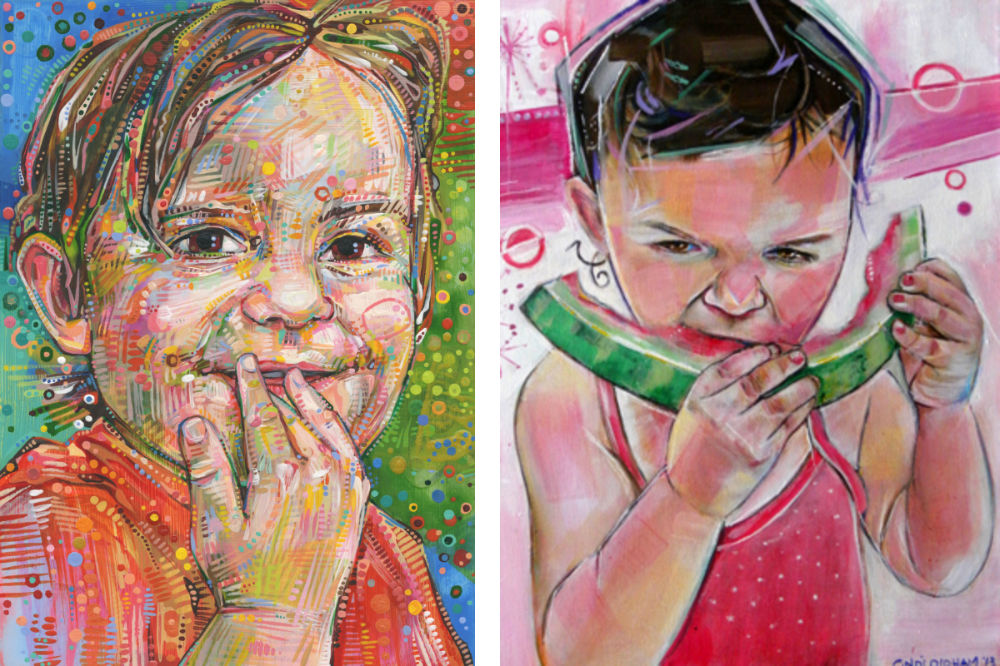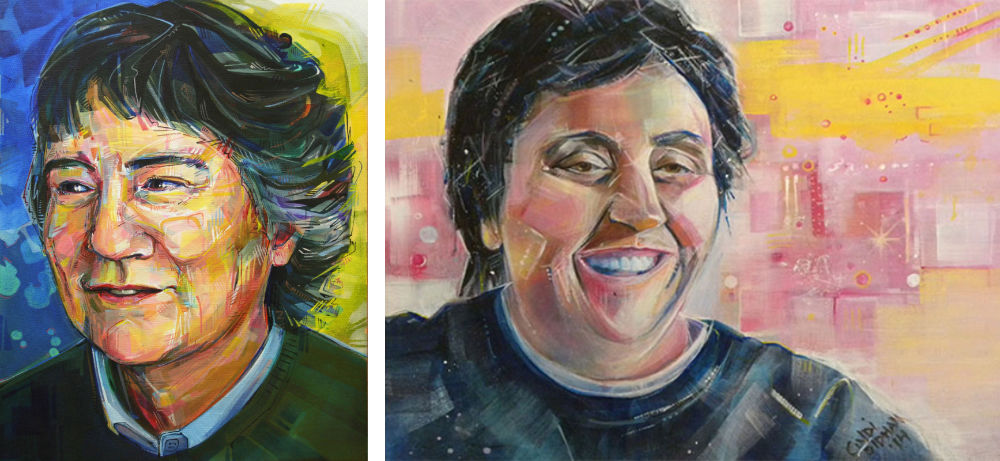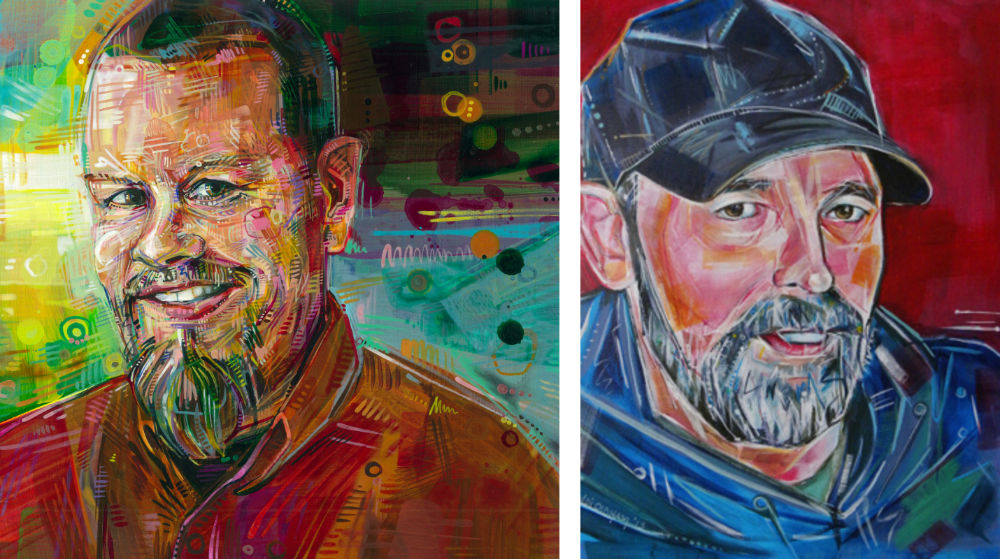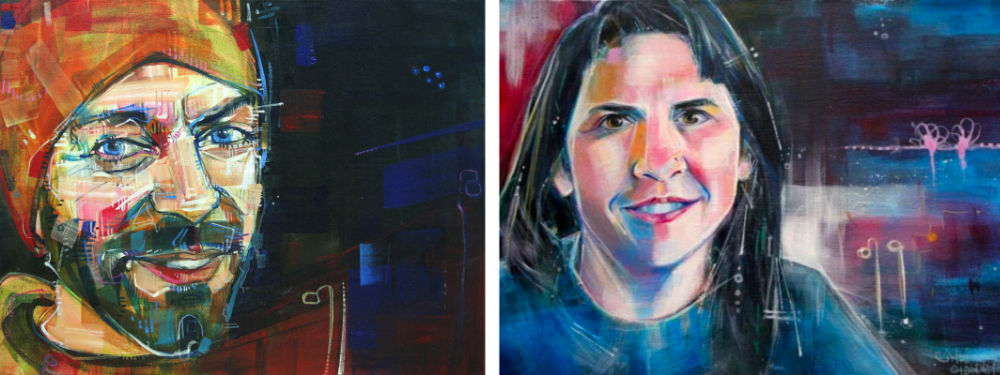Blog / 2014 / Artist Cindi Oldham: Interview about Art and Imitation
July 1, 2014
A few weeks ago, after receiving an email from Cindi Oldham, I visited her website. While there, I was struck by the similarities not only in our painting style, but also in the layout and content of our homes on the web. Everything from our design choices to our price lists were almost identical. I’d never seen the presentation of my art reflected so comprehensively before, and, as with any imitation, it provided perspective on how my expression is perceived by others.
I was already learning from what I had seen, but Cindi had still more useful feedback for me. When I asked her if she’d be interested in doing an interview for my blog, she admitted she was a little uneasy about it. She felt that I’d been confrontational in a recent blog post about another artist whose style is influenced by mine.
In it, I reveal the fears I experience despite how courageous I can be by putting my art into the public domain, but, to Cindi, my disclosure came across not as vulnerability but as a contradiction to the copy-happy stance I embraced in my TEDx talk last April. Her reaction helped me to understand my role—both the one I’ve cast myself in and the one that others have assigned me—as a leader in the free culture movement.
I’m grateful for all of Cindi’s feedback and for her willingness to answer my questions, especially in light of her discomfort.

GWENN: You’ve told me that recently you’ve stopped striving toward traditional realism and that the change has been freeing. Why were you drawn to realism to begin with? What is freeing about the change?
CINDI: Not stopped. I said that I was giving myself permission not to be so “tight” with it. I’ve always been impressed by artists who could render something that I thought was a photo until told otherwise, I strived to accomplish that with my own art for years, but it became really limiting and there is little room for creativity there. Loosening my grip on that feels very liberating.

GWENN: You say in your bio: “My work is influenced by artists who have in the past, or are now expanding the definition of realism, in subject matter and/or technique.” Who are they?
CINDI: I’ve had many over the years. Contemporary influences include Ann Kullberg, Daniel Greene, Paul McCormack, Richard Schmid, Nancy Guzik, you, and many more. Anne paints realistic portraits in colored pencil, Daniel Greene paints realistic portraits in pastel, and Paul McCormack paints hyper realistic oil and watercolor portraits. Richard Schmid paints portraits as well as still life and landscapes, and he was and still is a big inspiration for me. I’ve always loved how he throws in random dots and splatters of contrasting color in an otherwise drab area of his paintings. I also love how he strategically leaves things out. The little random bits he throws in here and there just just a thrill to me! It’s like finding a bunch of goodies in the painting. You, like Schmid include those seemingly random bits of paint and color in otherwise bland parts of the painting and background that I love so much, but you take it a step further. You add cross hatching to yours, as well as random geometric shapes. I love adding bits of what looks like arbitrary color to my portrait work (goodies), and I have played around with painting the geometric shapes that I see on people’s faces. However, since I can’t completely let go of my drive toward realism, I don’t care for using crosshatching in my work. That strays too far out of my comfort zone.
Last but not least, I’ve also recently been inspired by the mixed media artists who contributed to the Soul Food class. I’ve incorporated some of the techniques they teach such as using a Gelli plate to make some of my portrait backgrounds, and I’m really pleased with the results!

GWENN: From what you write, it’s clear that you appreciate these artists’ contribution to your own practice. Is there a reason why you choose to not name these artists on your site?
CINDI: I didn’t name every artist that has influenced me because I was trying to keep my bio page short and sweet.
GWENN: How has imitating other artists’ work opened doors for you?
CINDI: I love get ideas from the all the artists I meet and talk to. When I see a technique that is intriguing, I try to learn it, and incorporate it into my own work. It keeps my work always evolving and never stagnant.

GWENN: How would you describe the differences between your style and mine? Between your style and the styles of other artists who influenced you?
CINDI: The differences between my style and yours as I mentioned above is that I’m doing a balancing act with my ever present drive toward realism, and my desire to let go of that. I push myself to go outside my comfort zone and add spots, splatters and shapes to my work, but I don’t do all the intense mark making (cross hatching) that you do in your portrait work. The difference between mine Ann Kullberg’s, Daniel Greene’s, Paul McCormack’s and Richard Schmid’s work is they are traditional realists. Lastly the differences between my work and the work of the artists who made instructional videos in Soul food, is that a lot of them work in mixed media.
GWENN: Have you ever been copied? If so, how?
CINDI: Not that I remember, or am aware of.
GWENN: Do you see your website as an expression of who you are? Or is it more a vehicle for marketing your art?
CINDI: It’s really a vehicle for marketing my art at the moment. I’ve spent the last couple years taking some classes and learning to code the whole thing myself, so it’s still a work of progress. I’ve recently attached a word press blog, so I hope it can also become more of an expression of who I am as I begin to write blog posts more often.

GWENN: You put a smiley face at the bottom of each page of your site where many artists put a copyright symbol. What do you mean to communicate with the smiley face? What are your views on copyright?
CINDI: Your blog posts and Ted Talk have convinced me to rethink copyright altogether. I copied the smiley that you have on your site because it communicates openness rather than fear.
GWENN: I heartily agree that openness is much nicer than fear! That said, I’m still not clear on your views with regards to your own work. Do you put your art in the public domain?
CINDI: I haven’t done anything formal to put my work into the public domain, (if there is a formal process) but yes, in response the the excesses of the copyright laws, I’m totally on board with this new paradigm!
GWENN: How do you define originality?
CINDI: I would agree with those that say there is no such thing as something completely original, and that we all owe a debt to those that came before!

For more information about the Soul Food classes which Cindi refers to, go here. I taught about drawing with markers for 2014 series of workshops, and Cindi was a Soul Food participant.
With regard to the question of putting one’s work formally into the public domain, there are two easy ways to do so. Communicating in a straightforward and obvious manner that the work is free is one way, and using a CC0 license is another way. For more about the various Creative Commons licenses and why artists should learn about copyright and its alternatives, check out my book You Share Good.
Maybe this post made you think of something you want to share with me? Or perhaps you have a question about my art? I’d love to hear from you!
To receive an email every time I publish a new article or video, sign up for my special mailing list.
If you enjoyed this post, Ko-fi allows you to donate. Every dollar you give is worth a bajillion to me!



